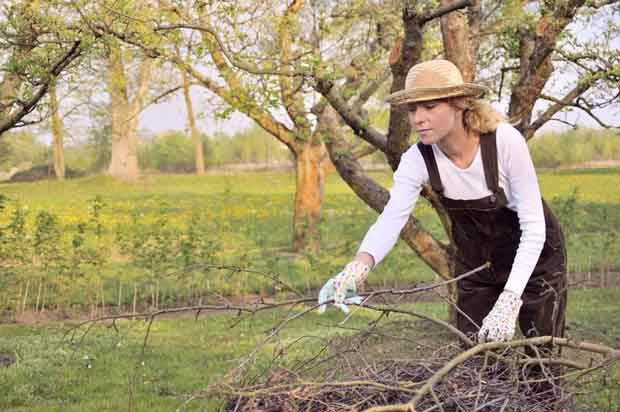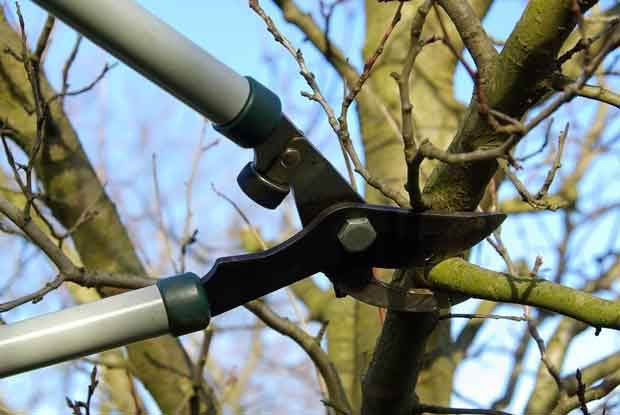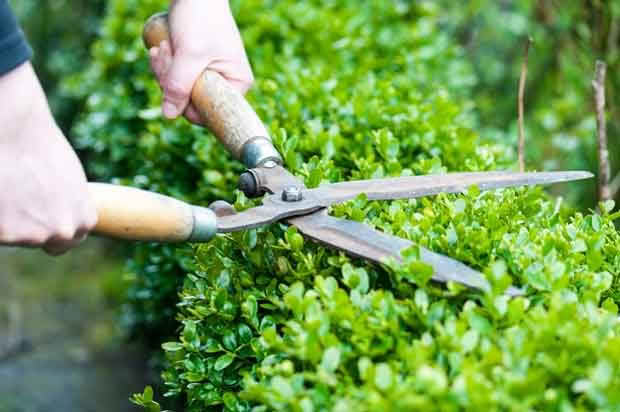5 essential pruning tools for getting a good cut

Photo: Dreamstime.
The colder months are a good opportunity to cut back the jungle in your backyard, so choosing good cutting and pruning tools is never a waste of money.
Words: Nadene Hall
Are you one of those gardeners that has to buy a new pair of secateurs each year because the old ones are blunt or rusty or lost somewhere in the bottom of your shed?
For the dedicated gardener, good cutting tools are essential for the health of their plants, and usually that means taking a bit more time and probably spending a bit more than $4.95 in the bargain bin.
BEFORE YOU BUY
No matter what sort of cutting tools you are buying, whether it’s a pair of secateurs or clippers for the hedge, ask yourself:
– Is it easy to use?
– Is it light enough, or heavy enough, to do the job?
– Is there left-handed option for the left-handed gardeners amongst us?
– Does it cut smoothly?
– Can it handle the type of cuts you want to make?
– Can you replace the blades or easily sharpen them?
How often you use your cutting tools and for how long can also affect your choices – if you use them for long periods of time, you might need to go for a more ergonomically designed tool. You can now buy pruning gear for people with weak fingers or small hands. Some come with geared blades, shock absorbers and cushioned handles with rubber grips.
High-tempered carbon steel blades will last longer and can be sharpened, unlike stamped or cast blades (rough edges and a cheaper price are the giveaway).
Finally, ask your friends what they use, or go to a professional gardener or local park staff and ask them what they use and why it is good (or bad!).
If you want quality and durability, look for words on the packaging like “pro/professional” or “heavy-duty.
Many manufacturers now offer a lifetime warranty on their tools, so you can get a guarantee your money is being spent on something that will last.

There are two types of blades for secateurs,– anvil or bypass. Photo: Dreamstime.
WHAT TO LOOK FOR IN SECATEURS
Price: $5-$90
With secateurs, there is a choice of blade type – anvil or bypass.
Bypass
Most secateurs are bypass – this means they have a scissor-like action, with one cutting blade that slices pas a curved, unsharpened beak. This beak supports the plant as you cut, with the end result a neatly cut wound that will heal quicker.
Bypass secateurs can also cut very close to the stem.
Anvil
This type of secateur has both blades sharpened, meaning you use less effort with each cut and it can be used on slightly thicker foliage. This type of secateur doesn’t tend to be as popular as bypass secateurs because it can’t get as close to the stem and, if not properly sharpened, can do damage to the cut branch by crushing it. However they are very good for taking out dead wood.
Good secateurs should be comfortable in your hand, not open up too wide or have a stiff spring that doesn’t allow you to close it easily using just one hand.
Newer secateurs come with rubber grips and ergonomically designed handles so try out every pair before you buy. If you use gloves when you garden, take a pair along with you and wear them while you test the different tools so you know if it will be comfortable.
LOPPERS
Price: $24.95 – $180
Loppers are used for cutting slightly larger branches from 20-45mm in thickness (depending on the quality of the loppers you buy). They also enable you to reach higher into a tree or shrub, thanks to their long handles.
Like secateurs, these come in anvil or bypass form and the handle length can vary, lighter and shorter for the weaker among us, much longer and heavier for those of us able to control them.
Some of the more expensive options have extendable pole handles allowing you to cut up to 4m above your head and/or thicker, heavy-duty cutting heads that can cut branches up to 35-40mm thick.
PRUNING SAW
Price: $25 – $150
A good pruning saw is sharp – damn sharp in fact – and should come with a foldaway blade or a blade cover. This is not a tool to leave lying around as its teeth are designed to be razor-sharp.
The whole saw should look somewhat like a banana, with a blade that cuts on the pull stroke and is good to cut branches up to 25cm thick. The best pruning saws have a triple tooth blade design (sometimes called a tri-cut, a razor tooth or three-cut). This means it has three blades – one on each side of the blade and a third edge on the tooth point. This allows it to dig into the wood while the side edges cut it, a much more efficient way of pruning because each pull of the blade is deeper.
POLE PRUNERS/SAWS
Price: $25 – $200
Both loppers and saws can come on poles, to allow you to reach up to 4m high with them. Some come as an attachment to your standard-size tools, others are purpose-built telescopic tools that you can adjust to suit the tree you are pruning.
Most telescope handles are light-weight fiberglass or aluminium and use a rope or sliding collar to work the cutting mechanism. These longer handles aren’t just useful for the taller trees and shrubs in your garden – many gardeners use them to prune particularly prickly plants too.

Hedge shears in action. Photo: Dreamstime
HEDGE SHEARS/CLIPPERS
Price: $30 – $100
Hedge shears are basically over-sized scissors, good for pruning hedge twigs and branches up to about 5mm thick. Good options include fiberglass handles (light weight), rubber bumpers to adsorb the cutting shock and some even have an adjustable lock-nut on the hinge so you can change the tension depending on what type of hedge you are pruning.
Power hedge clippers are increasingly popular, making quick work of a job that can be quite daunting. You can get shears that run on rechargeable batteries, electricity or petrol and these are great but you need to be confident in using them. Make a cutting mistake with these and you can smoothly shear off quite a lot of hedge!
They can jam if you try to cut branches that are too thick and you need to have some upper body strength because even light models can feel pretty heavy after a few minutes of use. Expect to pay anywhere from $150 to $450 for power hedge clippers.
GOOD PRUNING PRACTICE
Pruning is an important maintenance job in most gardens, whether it is your roses, your fruit trees or an over-grown camellia.
– To start with, make sure the blades on your cutting tools are sharp and clean. If you’re not sure how to correctly sharpen the blades on your secateurs or loppers, it should only cost a few dollars to have it done professionally.
– If you want to give it a go yourself, a sharpening stone or a file is best. Note which blades should be sharpened and keep your grinding to the correct angle. Always push away from the blade when sharpening and only in the one direction. Cut a piece of paper as a test.
– On anvil secateurs, you will have two blades to sharpen and these should be flat, not rounded.
– In between pruning jobs, clean your pruning blades. A bleach/water mix is a good cleaning medium. Dry blades immediately, then spray with oil to prevent rust.

